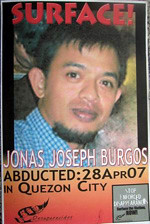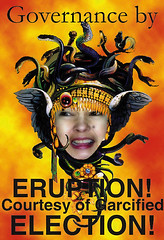Mobilizing Overseas Filipino Investment Remittances through a Philippine “Marshall Plan”
What is being proposed is no less than an OFN (Overseas Filipino Nation) fueled investment inflow that is similar to the European Marshall Plan in the post world-war 2 era. In the original Marshall Plan some 13 billion dollars flowed from the US to Europe in economic and technical assistance for a period of 4 years from 1947-1951. This 13 Billion Marshall Plan postwar dollars translates to about 800 Billion in current terms (2010 prices) which meant an infusion of approximately 200 Billion dollars a year from the US into Europe for the 4 year period from 1947 to 1951.
The European Marshall Plan was considered a great success. By 1952 as the funding ended, the economy of every participant state had surpassed pre-war levels; for all Marshall plan recipients, output in 1951 was 35% higher than in 1938. So during these four years of the Marshall Plan not only did the participating countries of Europe recover from the devastation of WWII but they were also able to improve their economic condition dramatically compared to pre-war baseline levels.
It is already a stylized fact that remittance inflows into the Philippines has shored up the nation despite years of economic mismanagement. It is also known that these are mainly consumption driven remittances and hence it easily confounds economists who try to look for comparable multiplier effects that they are familiar with when dealing with hard currency inflows targeted for investments. It has also been seen that these inflows were relatively inelastic, impervious to externalities in the world economy and levels of confidence for existing leadership in the country.
The resilience of these remittances is due to the fact that they are need based and that they represent merely less than 4 percent of the total incomes that the population of Overseas Filipinos enjoy. This singular fact implies that if the OFN had more confidence in the Philippine leadership then they would be more than willing to dig into their deep pockets and invest with confidence in Philippine economic growth. Hence, the rationale for our Marshall Plan prescription.
For our Philippine version today of that Marshall Plan effort in Europe, we will need to mobilize an additional investment remittance amount of about 140 Billion US dollars on top of that same amount in consumption remittances during the six year period of P-Noys term for a total remittance effort of approximately 280 Billion (from 2010 to 2016). This means that instead of expecting just 21 Billion US dollars in consumption driven remittances by 2011 we should have a combined consumption and investment driven remittance inflow of about 42 Billion; then 44 B in 2012; 46 B in 2013; 48 B in 2014; 50 B by 2015; and 52 B in 2016. These remittance targets represent about 8 percent of projected OFN Income flows. From 2010 to 2016 we could expect OFN incomes to grow from approximately 550 billion in 2010 to approximately 740 billion US by 2016. Given the fact that the norm for Filipino household is a savings rate of somewhere between 15 to 20 percent, remittance targeting at 8 percent of projected OFN incomes is quite reasonable.
Of the US $ 140 billion investment driven remittance target for these six year period about 40 billion should be allotted to the external debt relief efforts. The estimate of our external debt exposure varies from about 42 billion US to 58 billion US . A lower target figure of 40 billion is used here since we should strive to negotiate a buy-down process in paying off our external debt – similar to the way credit card debt is negotiated for settlement at cents on the dollar. Singapore and China – are countries that enjoy relative independence and autonomy in their domestic economic policies (i.e. to IMF and WB conditionalities) because they have a very low proportion of externally held public debt. It is 8 percent for China and 2 percent for Singapore . The Philippines meanwhile has about 45 percent of externally held public debt. By shifting most of these debts into sovereign guaranteed peso bonds held by Overseas Filipinos, we will be freeing Prez Noynoy’s hand to pursue aggressive economic policies like cheapening the peso for export promotions and/or output/M1 targeting which is more of an activists economic strategy as opposed to the laid-back and sterile risk-averse inflation targeting that we now have in our monetary arrangements.
To achieve this admittedly ambitious goal the whole economic management machinery of government should focus on this massive fund mobilization effort. The usual practice of debt bond issuances should give way to more innovative efforts. Even the current announced plan of issuing peso denominated bonds in the international market pales against the requirements of the nation and the massive pent-up desire of elements in the OFN to help the country with a newfound confidence in the credible leadership of President Noynoy Aquino. Even the 8 point foreign policy program of the previous administration which list the Overseas Filipino as the 8th priority should now be stood on its head with the OFN given the top priority ranking that it deserves. The appointment of Community Consuls from among the ranks of Overseas Filipino Community leaders should be seriously considered to boost the ability to draw more investment remittance inflows into the country.
The crucial element here is to use a quasi- non governmental organization as the main instrument in mobilizing these investment remittances instead of the usual channels. The analogy is one of building a highway by administration rather than using a contractor. The Bureau of the treasury remains as the bond issuing fiscal agent but this time instead of dealing with the banking cartel, the government deals directly with the OFN residents through the Quango. The Quango , which will be known as the Overseas Development Fund (ODF) will be constituted with experienced private sector hands and organized in the caliber of the ADB, WB, IMF , and leading Banks with the corresponding pay scale. Shifting the external debt into peso held bonds will take approximately 3 to 4 years. Putting in sticky features in the peso bond design like debenture and lottery elements needs careful planning. Likewise, promoting other silver-bullet bonds like the teacher – debt relief bonds and the palengke micro finance bonds will also need some time and a high level of competence and professionalism.
There is no doubt that if Prez Noynoy can inspire OFN residents to invest in the Philippines in significant amounts our Philippine ' Marshall plan' will also be a success. However, this would mean that he would have held the ugly head of corruption at bay; developed efficient methods of production to decrease our capital output ratios; increase our savings rate dramatically; and jawboned significant factions of the Philippine economic and business elite to share wealth building business opportunities with OFN residents. With Prez Noynoy providing inspired leadership and with a very positive and sustained response from the OFN residents then perhaps the Philippines may have a chance -- a good chance at finally realizing the economic potential that we always had.
___________________________________________________
Read Sylvia Mayuga's Commentary: Economics of hope regarding her observation on the Overseas Filipinos for Good Governance conference held in Manila.
More Articles from GRR:
**********************************************************************The European Marshall Plan was considered a great success. By 1952 as the funding ended, the economy of every participant state had surpassed pre-war levels; for all Marshall plan recipients, output in 1951 was 35% higher than in 1938. So during these four years of the Marshall Plan not only did the participating countries of Europe recover from the devastation of WWII but they were also able to improve their economic condition dramatically compared to pre-war baseline levels.
It is already a stylized fact that remittance inflows into the Philippines has shored up the nation despite years of economic mismanagement. It is also known that these are mainly consumption driven remittances and hence it easily confounds economists who try to look for comparable multiplier effects that they are familiar with when dealing with hard currency inflows targeted for investments. It has also been seen that these inflows were relatively inelastic, impervious to externalities in the world economy and levels of confidence for existing leadership in the country.
The resilience of these remittances is due to the fact that they are need based and that they represent merely less than 4 percent of the total incomes that the population of Overseas Filipinos enjoy. This singular fact implies that if the OFN had more confidence in the Philippine leadership then they would be more than willing to dig into their deep pockets and invest with confidence in Philippine economic growth. Hence, the rationale for our Marshall Plan prescription.
For our Philippine version today of that Marshall Plan effort in Europe, we will need to mobilize an additional investment remittance amount of about 140 Billion US dollars on top of that same amount in consumption remittances during the six year period of P-Noys term for a total remittance effort of approximately 280 Billion (from 2010 to 2016). This means that instead of expecting just 21 Billion US dollars in consumption driven remittances by 2011 we should have a combined consumption and investment driven remittance inflow of about 42 Billion; then 44 B in 2012; 46 B in 2013; 48 B in 2014; 50 B by 2015; and 52 B in 2016. These remittance targets represent about 8 percent of projected OFN Income flows. From 2010 to 2016 we could expect OFN incomes to grow from approximately 550 billion in 2010 to approximately 740 billion US by 2016. Given the fact that the norm for Filipino household is a savings rate of somewhere between 15 to 20 percent, remittance targeting at 8 percent of projected OFN incomes is quite reasonable.
Of the US $ 140 billion investment driven remittance target for these six year period about 40 billion should be allotted to the external debt relief efforts. The estimate of our external debt exposure varies from about 42 billion US to 58 billion US . A lower target figure of 40 billion is used here since we should strive to negotiate a buy-down process in paying off our external debt – similar to the way credit card debt is negotiated for settlement at cents on the dollar. Singapore and China – are countries that enjoy relative independence and autonomy in their domestic economic policies (i.e. to IMF and WB conditionalities) because they have a very low proportion of externally held public debt. It is 8 percent for China and 2 percent for Singapore . The Philippines meanwhile has about 45 percent of externally held public debt. By shifting most of these debts into sovereign guaranteed peso bonds held by Overseas Filipinos, we will be freeing Prez Noynoy’s hand to pursue aggressive economic policies like cheapening the peso for export promotions and/or output/M1 targeting which is more of an activists economic strategy as opposed to the laid-back and sterile risk-averse inflation targeting that we now have in our monetary arrangements.
To achieve this admittedly ambitious goal the whole economic management machinery of government should focus on this massive fund mobilization effort. The usual practice of debt bond issuances should give way to more innovative efforts. Even the current announced plan of issuing peso denominated bonds in the international market pales against the requirements of the nation and the massive pent-up desire of elements in the OFN to help the country with a newfound confidence in the credible leadership of President Noynoy Aquino. Even the 8 point foreign policy program of the previous administration which list the Overseas Filipino as the 8th priority should now be stood on its head with the OFN given the top priority ranking that it deserves. The appointment of Community Consuls from among the ranks of Overseas Filipino Community leaders should be seriously considered to boost the ability to draw more investment remittance inflows into the country.
The crucial element here is to use a quasi- non governmental organization as the main instrument in mobilizing these investment remittances instead of the usual channels. The analogy is one of building a highway by administration rather than using a contractor. The Bureau of the treasury remains as the bond issuing fiscal agent but this time instead of dealing with the banking cartel, the government deals directly with the OFN residents through the Quango. The Quango , which will be known as the Overseas Development Fund (ODF) will be constituted with experienced private sector hands and organized in the caliber of the ADB, WB, IMF , and leading Banks with the corresponding pay scale. Shifting the external debt into peso held bonds will take approximately 3 to 4 years. Putting in sticky features in the peso bond design like debenture and lottery elements needs careful planning. Likewise, promoting other silver-bullet bonds like the teacher – debt relief bonds and the palengke micro finance bonds will also need some time and a high level of competence and professionalism.
There is no doubt that if Prez Noynoy can inspire OFN residents to invest in the Philippines in significant amounts our Philippine ' Marshall plan' will also be a success. However, this would mean that he would have held the ugly head of corruption at bay; developed efficient methods of production to decrease our capital output ratios; increase our savings rate dramatically; and jawboned significant factions of the Philippine economic and business elite to share wealth building business opportunities with OFN residents. With Prez Noynoy providing inspired leadership and with a very positive and sustained response from the OFN residents then perhaps the Philippines may have a chance -- a good chance at finally realizing the economic potential that we always had.
___________________________________________________
Read Sylvia Mayuga's Commentary: Economics of hope regarding her observation on the Overseas Filipinos for Good Governance conference held in Manila.
More Articles from GRR:
 Gil R. Ramos Ph.d. finished his Doctorate in Monetary Economics and Masters in Population Economics at the University of Hawaii. He did his AB Economics and also a Masters in Urban Regional Planning both at the University of the Philippines. He currently teaches MBA students at the (New Jersey City University) NJCU in Managerial Economics, Corporate Financial Management, and Managerial Information Systems. He runs his own consulting firm GRR Analytics based in the New York / New Jersey area.
Gil R. Ramos Ph.d. finished his Doctorate in Monetary Economics and Masters in Population Economics at the University of Hawaii. He did his AB Economics and also a Masters in Urban Regional Planning both at the University of the Philippines. He currently teaches MBA students at the (New Jersey City University) NJCU in Managerial Economics, Corporate Financial Management, and Managerial Information Systems. He runs his own consulting firm GRR Analytics based in the New York / New Jersey area.
POGB will not sell, exchange, use or allow any 3rd party access to your email for
any other purposes without exception, email exclusively for article updates only.
























5 Speak Out:
The Filipinos in diaspora has finally come to a full circle. What used to be a miracle only to their respective families, the OFW all over the world could now be a miracle to the whole nation and people. Hardwork, love of family and their abiding fate on God, the OFW has turned his wandering into a purpose beyond his own world and could be the key that would free the Filipinos and country from the slavery of their foreign debt.
The question is WOULD THE BANK CARTEL IN THE PHIL. ALLOW THIS?
My answer is IT ALL DEPENDS ON HOW PRESIDENT NOYNOY WOULD RESPOND TO THIS OPPORTUNITY OFFERED BY THE OFW!
I just could not see how we could buy back our foreign debts within the near future without having to borrow some more from foreign creditors and HOPE that our economic plans financed by these new foreign borrowings would be successful while IMF, WB and other international financial institutions ( heavily influenced by our foreign creditors) are DICTATING us how we should conduct business. With OFW BONDS, there would be a dramatic change in our economic scenario.
With the OFW BONDS,in the hands of a president we trust and his competent and equally trusted finance group, we are free from the dictates of unnecessary outside interest but only by that which is best for people and country.
With the OFW BONDS denominated in peso, the OFW worldwide would buy OFW BONDS in dollars. This is new money from the OFW. A part of which we shall use to buy back/liquidate and free ourselves from the control of our foreign creditors. The rest we shall use for other target developmental programs for implementation by President Noynoy as we have suggested such as: microfinance e.g. for cooperatives where palengke intrepreneurs may borrow money at low rates to free them from the obscenity of ususrers or for financial cooperatives supportive of public school teachers likewise to free them from loansharks that prey on so many of them and seed money to finance the legal defense of deserving OFW who fall into the cracks of the law of the foreign country where the OFW works and other developmental projects, big and small.
With new money from OFW BONDS, Pres. NOYNOY may now mebark also on national projects that also could answer/address our national problems on poverty and un-employment.
But we need the cooperation of all all sectors, both private and public, and all Filipinos in and outside, the Philippines.
This clearly calls for the birth of a national movement of Pinoys from all sectors both private or public and everywhere whether inside or outside the Philippines.
This movement shall have a singular principal purpose -TO SAVE THE COUNTRY AND REGAIN ONCE MORE OUR NATIONAL PRIDE.
While I am not among the ranks of the OFWs, there are more than 10 OFWs from our collateral relatives in both parental lines. Thus, I have been monitoring from the side-lines the over-all plight of OFWs.
From where I have been looking, I suggest for OFWs to make clear cut distinction between what the Philippine Government can do, and what the OFWs can do, individually and collectively.
With regard to foreign debts, the issue must be addressed by the Philippine Government by itself. Those who can find time to review the situation just have to access the official website of the Department of Budget and Management (DBM) to get a feel of what can be done on the part of the government. Specifically, the focus should be on the "Automatic Provisions" for both interest and principals of the outstanding foreign debt. The insanity of continuing the automatic servicing of foreign debts that throw a monkey wrench on the revenues generated through taxation, and then the resulting budget deficit to be covered by additional foreign loans must be stopped.
The OFW bonds is nothing other than additional borrowings of the National Government, no matter the advertising pitch of the spinners in the Department of Finance, Bangko Sentral ng Pilipinas, and the Office of the President of the Philippines.
Instead of OFW bonds, the same volume of money of OFWs will be best funneled into OFW-controlled accounts in the private sector. The 2 main conduits are: 1) existing mutual funds managed by the universal banks, whereby the OFWs retain control over their own funds; and 2) direct investment placements in specific projects in commercial food production, development of alternative sources of energy, tourism development, and selected heavy industries, through business partnership with established companies with global operations.
With regard to professional assistance from disinterested parties, it will be best for OFWs to secure the services of professional consultants based in the 7,107 islands as fund administrators, with external auditors to ensure transparency and appropriate control measures.
Should there be OFW groups that would like to explore seriously those options, just send a PM for further exploratory dialogue.
@Neo, You are confusing this OF initiative into a government project, no it is not, not yet anyway but we surely wanted this adopted by P-Noys administration.
It is easy to shoot other people's ideas but in order to get your point across I suggest we stick to what is proposed and not muddle it with proposals that does not even come close to what is being proposed. In order to appreciate the proposal I suggest that you read the rest of the paper written by Gil R. Ramos, Ph.D. posted at POGB.
One Hundred and a Thousand Days – then a Thousand more!
It is a Filipino version of a "Marshall Plan" patterned after the European model after WWII, meaning massive in scale and what you are proposing does not even come close or in any way offers a viable alternative. I believe Merit has pointed out the gist of the proposal, which if successful will give us the leverage out of the constrictions and dictates of the IMF.
@PJ and Merit: In order to avoid creating any impression that my goal is to shoot down the proposal, I will use questions the answers to which will reflect the earlier rejoinder I posted. :-)
Will the instrument be a BOND? Yes or No
If the instrument will be a BOND, then isn't it a DEBT? Yes or No
Will it be the Philippine Government to issue the BOND? Yes or No
If the BOND will be issued by the Philippine Government, then the Philippine Government incurs a DEBT? Yes or No
Based on your responses to those questions, I will pose other relevant questions.
Post a Comment